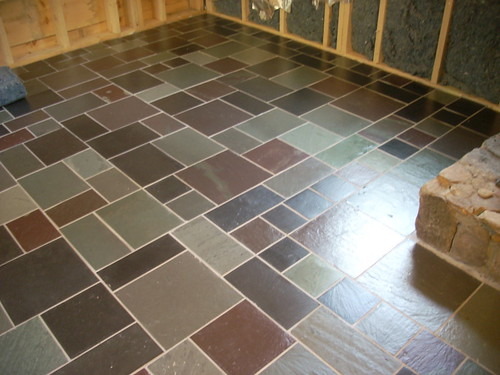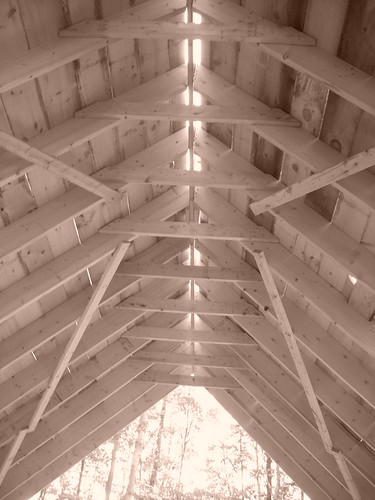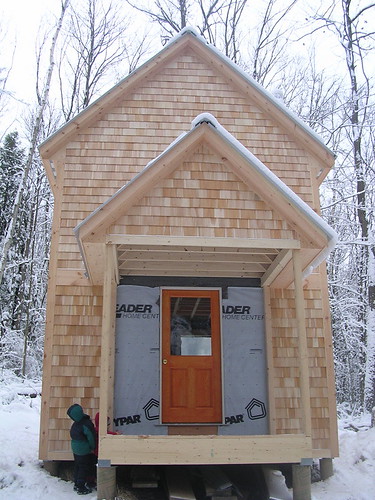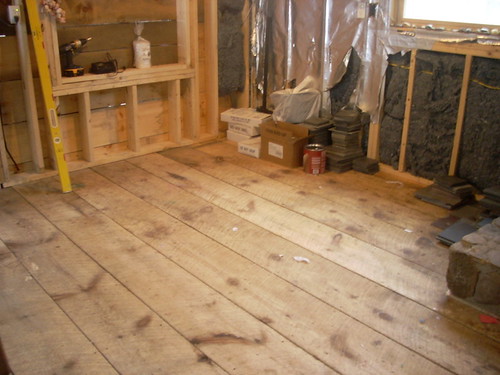 This is the sub-floor that we started with. Our home contains absolutely no ply-wood. In most cases where ply-wood would be used, we used rough-cut hemlock from a very local, small, saw mill. We certainly didn’t save any money this way, but we felt it was the best choice considering our situation. And it did result in a very solidly constructed building!
This is the sub-floor that we started with. Our home contains absolutely no ply-wood. In most cases where ply-wood would be used, we used rough-cut hemlock from a very local, small, saw mill. We certainly didn’t save any money this way, but we felt it was the best choice considering our situation. And it did result in a very solidly constructed building!
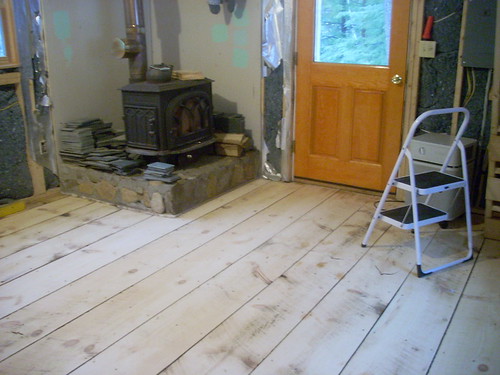
Our “unique” sub-floor presented a bit of a challenge, since it was not the typical, even and uniform surface. Before anything else could be done, the whole thing had to be sanded down as best as possible. Even after all of the sanding we still needed some sort of an underlayment. This was another difficulty as most of the products typically used were far too toxic for us. Finding the information that we were looking for, including full ingredient lists and safety data proved to be very difficult. We were also under time constraints for this project.
We ended up going with Homasote. This product has it’s good points and it did work out well for us. I think there are probably better options out there, but I didn’t have the time of resources to find them.
Homasote, the good points:
- It’s made almost entirely of recycled materials
- It is completely recyclable
- In general it has really good ratings on it’s MSDS-as low as possible for it’s eco toxicity and on the very low end for personal toxicity (the main concerns being dust when cutting, which is always a concern with this type of product)
- It was readily available at our local hardware store
- Very reasonably priced in comparison to other products of this sort.
- Relatively easy to install
- The company itself has a fairly good history (to the best of my knowledge), including being the oldest manufacturer of recycled building materials in the US. They also recycling the water used in the manufacturing process.
- formaldehyde free
Homasote, the draw backs:
- The main drawback is that several of the ingredients are less then ideal. It’s mainly composed of recycled post-consumer paper and newspapers, which are pretty chemical laden to begin with.
- The newspapers are mixed with paraffin wax, which is a petroleum product. Most people consider it to be fairly benign, but our family avoids it, and as many other petroleum products as possible, as a general rule.
- This probably wouldn’t be an issue for most people, but my initial research lead me to believe that wheat was also used in it’s production (I am still unsure if this is correct or not). This is probably a wonderful choice for a lot of people out there. Within our family, there are several people with serious wheat allergies, so this too is an area where we need to use caution.
- And finally, after we had installed it, I found a reference to it being treated with a very small amount of “copper based bio-cide”. I’ve never been able to figure out the exact chemical they are referring too. And, in looking again for the sake of this post, I can no longer even find the place where I saw it mentioned.
The Homasote is the gray colored board shown in the bottom corner of this picture:

After researching our options, full-well knowing that it was going to be covered with several layers and be quite well sealed in, we decided that it was a reasonable option for us. I did insist on a great deal of precaution being taken with the installation. All of the cutting was done outside and all of the dust cleaned up afterward. The room was sealed off from the rest of the house, well ventilated to the outside and thoroughly cleaned afterward, including running our air purifier on high for quite some time.
